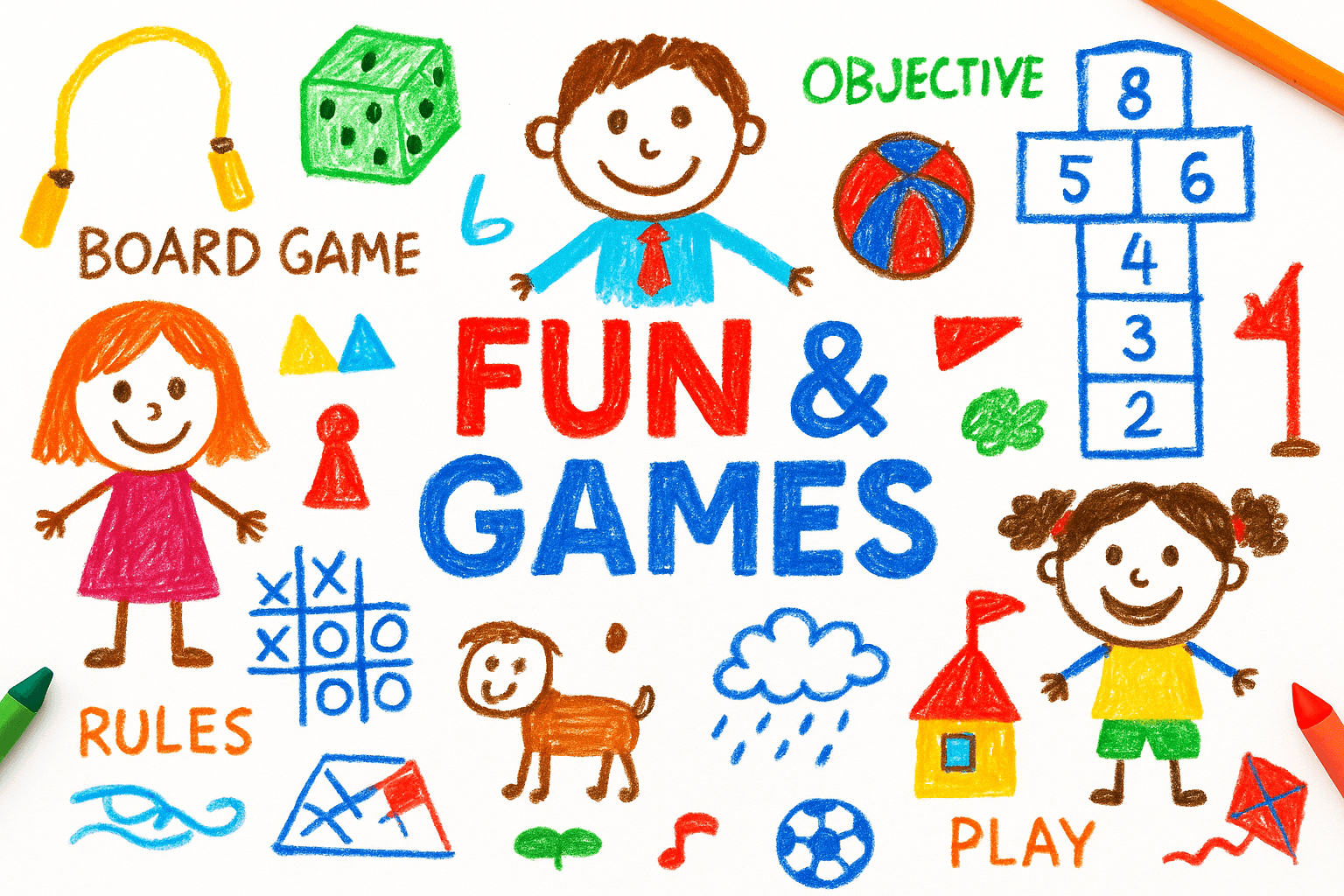Week 1: What games do I like to play?
Weekly Focus
Children explore different types of games, identify their favorite games, and discuss what makes games fun. They'll learn basic game vocabulary and begin to understand that games have rules and objectives.
Week at a Glance
- Identify different types of games
- Express personal game preferences
- Learn basic game vocabulary
- Understand that games have rules

Weekly Overview
Theme
What games do I like to play?
Focus Areas
- Game types
- Game preferences
- Game vocabulary
- Basic rules
Key Vocabulary
Creating a Game-Friendly Classroom
Daily Plans
Monday: Introduction to Games
Daily schedule and activities
Morning Activity
Morning Circle: Discuss 'What is a game?' and why we play games
Literacy Focus
Read 'Join In and Play' by Cheri J. Meiners
Math Focus
Count and sort picture cards of different game types
Afternoon Activity
Create a class chart of games students like to play
Materials Needed
- Join In and Play book
- Picture cards of games
- Chart paper
- Markers
- Sticky notes
Assessment Notes
Observe students' prior knowledge about games and their ability to identify different types of games.
Featured Activities
Game Sorting Center
Students sort picture cards of different games into categories (board games, card games, ball games, etc.) and discuss what makes each type unique.
Duration
30 minutes
Materials
- Game picture cards
- Sorting mats
- Labels for categories
- Real game examples
Learning Areas
Create-a-Game
Students work in small groups to create a simple game using classroom materials. They must decide on basic rules and how to play.
Duration
45 minutes
Materials
- Paper
- Markers
- Dice
- Game pieces
- Various classroom materials
Learning Areas
Game Show and Tell
Students bring in a favorite game from home (or a picture of it) and share with the class why they like it and how it's played.
Duration
30 minutes (over several days)
Materials
- Games from home
- Show and Tell schedule
- Discussion prompts
Learning Areas
Roll and Move Math Game
Students play a simple board game where they roll a die, move that many spaces, and perform a simple math task (count objects, identify numbers, etc.).
Duration
25 minutes
Materials
- Game board template
- Dice
- Game pieces
- Math task cards
Learning Areas
Supporting All Learners
Resources
Books
- "Join In and Play" by Cheri J. Meiners
- "Play With Me" by Michelle Lee
- "Bad Kitty Does Not Like Video Games" by Nick Bruel
- "The Recess Queen" by Alexis O'Neill
- "Let's Play!" by Hervé Tullet
Printables
- Game type sorting cards
- Game vocabulary cards
- Simple game board templates
- "My Favorite Game" writing template
- Game rules visual cards
Home Connection
Send home a family activity sheet that encourages families to play a simple game together and discuss what makes it fun. Include suggestions for simple games that require minimal materials.
